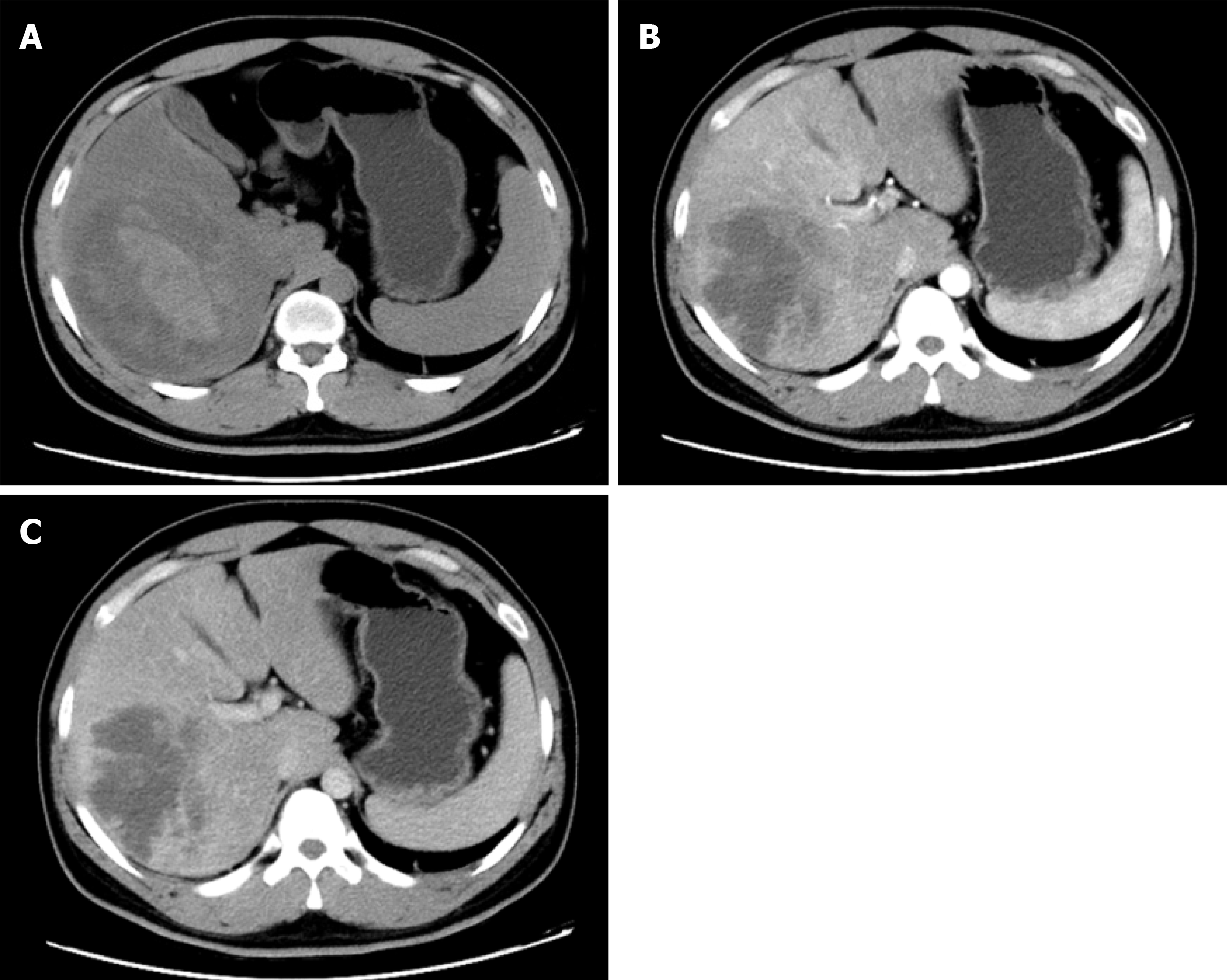Copyright
©The Author(s) 2020.
World J Clin Cases. May 26, 2020; 8(10): 2016-2022
Published online May 26, 2020. doi: 10.12998/wjcc.v8.i10.2016
Published online May 26, 2020. doi: 10.12998/wjcc.v8.i10.2016
Figure 1 Computed tomography imaging of liver infarction.
A: Plain scan phase of computed tomography (CT) detected an irregular lesion in the right lobe of the liver; B: Arterial phase of CT showed no obvious enhancement; C: Venous phase of CT showed no obvious enhancement.
Figure 2 Three-dimensional reconstruction of liver and lesion.
A: Arterial reconstruction of the liver revealed the relationship between lesion and hepatic artery; B: Venous reconstruction of the liver revealed the relationship between lesion and portal vein; C: Mixture of arterial and venous reconstruction.
Figure 3 Pathological examination of lesion.
A: Necrotic lesion was 16 cm × 12 cm × 8 cm in size without an envelope; B: Pathological section analysis of liver infarction; C: Pathological section analysis of tissue adjacent to lesion; D: Pathological section analysis of normal liver tissue, revealing fatty degeneration of hepatocytes.
- Citation: Wang FH, Yang NN, Liu F, Tian H. Unexplained huge liver infarction presenting as a tumor with bleeding: A case report. World J Clin Cases 2020; 8(10): 2016-2022
- URL: https://www.wjgnet.com/2307-8960/full/v8/i10/2016.htm
- DOI: https://dx.doi.org/10.12998/wjcc.v8.i10.2016











